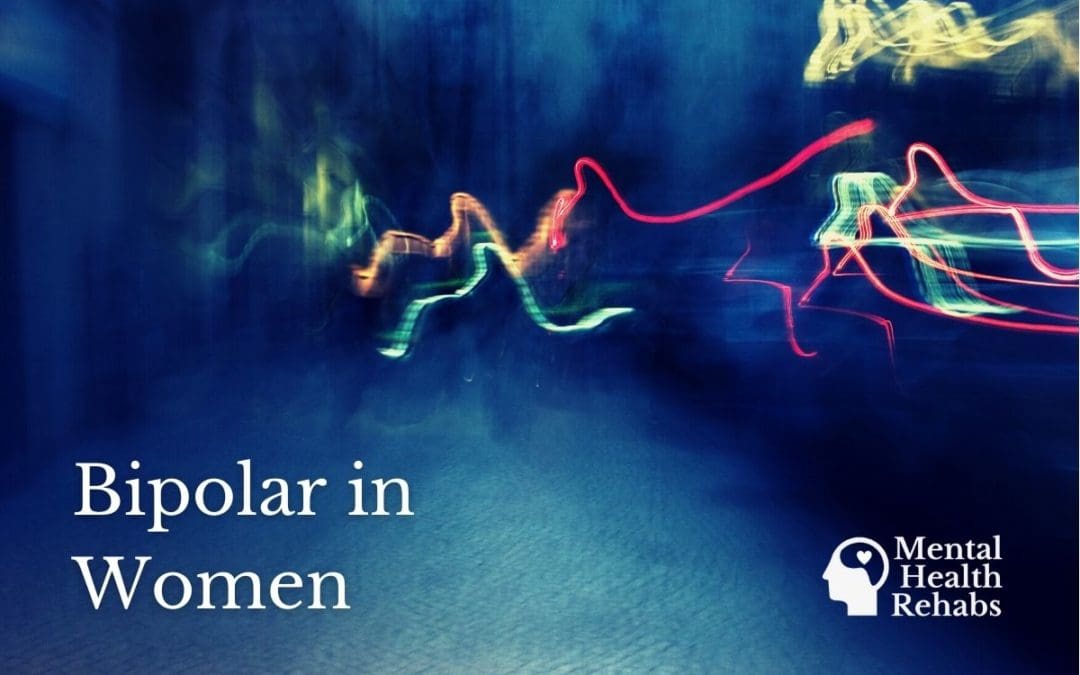Bipolar disorder affects about 5.7 million Americans (approximately 2.6%) at an equal rate for both men and women. One disparity, however, is how this disorder manifests itself in the different genders. Bipolar disorder symptoms in females can be vastly different from those exhibited by males. This in turn results in women with bipolar disorder suffering from certain side effects at disproportionate rates, which is why bipolar disorder tends to be more destructive and debilitating for females.
What Are the Symptoms of Bipolar Disorder?
There are four main types of symptoms that characterize this bipolar disorder: mania, hypomania, depression, and mixed mania. These occur in what are known as ‘episodes’, periods of time ranging from days to weeks.
Mania can have individuals feeling energetic, creative, and in high spirits. While it sounds like a positive effect, this unnaturally elevated mood can lead individuals to partake in risky behavior that they normally otherwise would not. This can include drug use, impulsive spending, or unsafe sex. Hypomania is a lesser form of mania that is typically less disruptive to a person’s day-to-day functioning. Both forms of mania can last a week or more and be accompanied by psychotic symptoms such as sensory hallucinations or delusions, however hypomania is far less likely to result in hospitalization than full-blown mania.
On the other end of the spectrum of bipolar disorder symptoms is severe depression. This can look like lethargy, a loss of interest in hobbies, as well as overwhelming sadness. Depressive episodes typically last up to two weeks at a time. Sometimes, these two opposite moods can occur at the same time, resulting in an episode known as mixed mania or a mixed episode. Both manic and depressive symptoms can last up to a week.
Bipolar Disorder in Females vs. Males
The primary differences of bipolar disorder symptoms in women versus men is 1) the types of episodes they experience and 2) the patterns in when those symptoms appear. The result of these two factors directly contributes to other side effects of bipolar disorder in women and ultimately, what bipolarism looks like. Other key differences include the age when bipolar typically occurs as well as comorbid conditions.
Onset
The onset of bipolar disorder in females occurs at a later age than in men. The difference isn’t tremendous, but a consistent finding. One study found the onset was approximately 3.2 years later in women than men, with the first signs of bipolar disorder in females typically occurring in their teenage years or early 20s. The hormonal influence of menstruation and pregnancy can also increase the severity of the disorder in women as well as the efficacy of treatment.
Mania & Depression
Women are more likely to have the less severe form of mania (hypomania) known as bipolar II disorder. Though this is the less disruptive form of the high-energy symptoms, it can make bipolar disorder more challenging to diagnose (and even more difficult to treat). Women are also much more likely to experience episodes of depression than men and these periods are the dominant of the two whereas mania is more dominant in men. This paired with a less noticeable form of mania often results in women being misdiagnosed with a depression disorder.
Cycling
However, the biggest and most meaningful distinction between the bipolar disorder symptoms in females and males is also the defining characteristic of this mental illness. The constant fluctuation between these two states is known as cycling and bipolar episodes are characterized by how quickly individuals alternate from manic to depressive states.
Rapid cycling is when a person experiences four or more manic/depressive cycles in a 12 month period. Naturally, going through the high highs of mania and low low’s of depression at greater frequencies can be both physically and mentally exhausting and feel like one is losing control. The side effects of which include increased rates of depression and suicide, substance abuse, anxiety, and hypothyroidism. Women are more likely than men to experience rapid cycling, along with those whose bipolar disorder symptoms appeared at a young age, who abuse drugs (including alcohol), or who have had this disorder for a long period of time.
Comorbid Conditions
The unique symptoms of bipolar disorder in females leads to a particular presentation and side effects. It’s also often accompanied by certain medical conditions at greater rates than in males: Obesity, thyroid disorders, and migraines. Thyroid issues can further aggravate the intensity and frequency of bipolar cycling.
Bipolar disorder (BD) is a serious mental illness that causes severe mood changes. These emotional fluctuations can drastically affect one’s personal and professional relationships, one’s ability to function in their different spheres, as well as their overall quality of life. If you suspect that you or someone you know experiences extreme and debilitating emotional instability, find a mental health rehab near you to speak to a mental health professional today.
Sources:
https://www.ncbi.nlm.nih.gov/pmc/articles/PMC4539870/
https://www.healthline.com/health/bipolar-disorder/bipolar-symptoms-in-women#risk-factors
https://www.verywellmind.com/bipolar-disorder-how-often-do-people-cycle-378814

